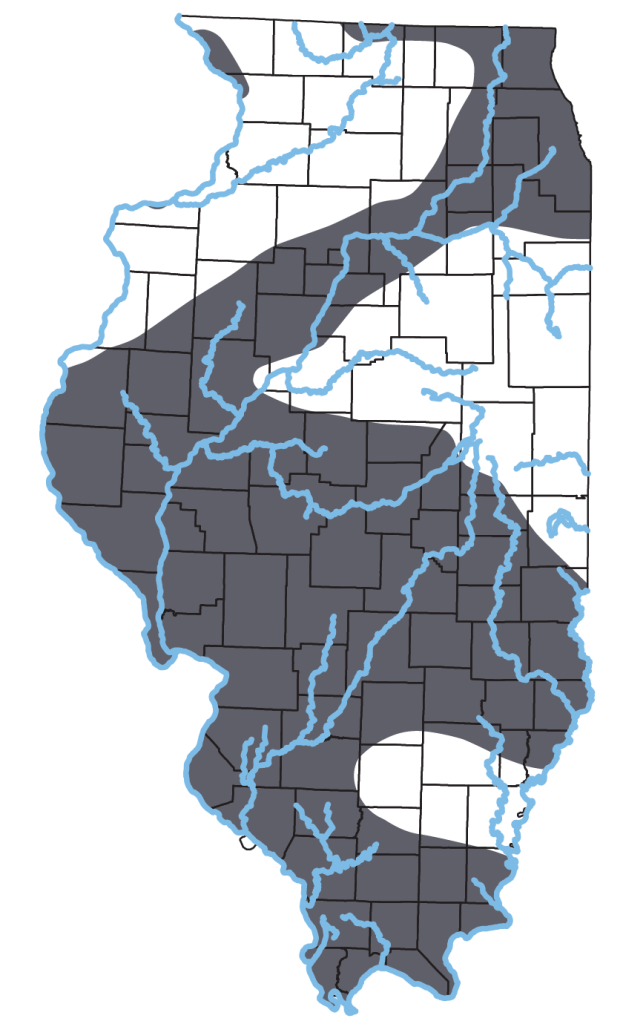Storeria occipitomaculata (Storer, 1839)


Key Characters: Three light spots just behind the head; plain red belly; two preocular scales; back scales strongly keeled and in 15 rows; anal plate divided.
Similar Species: Brownsnake, Smooth Earthsnake, Kirtland’s Snake. See the Key to Snakes of Illinois for help with identification.
Subspecies: Two subspecies are currently recognized, but only the Northern Red-bellied Snake, S. o. occipitomaculata is known to occur in Illinois.
Description: Small (up to 35 cm TL), slender black, gray, or light brown snake. Sometimes a faint midback stripe and usually a light blotch on the fifth supralabial scale. Belly varies from deep red to pale orange.
Habitat: Forests and moist woods, occasionally in pastures, bogs, and wet meadows, even in predominantly prairie counties.
Natural History: Active at ground level (during the day in spring and autumn, during night or twilight hours in summer), under rocks and logs, in rotting logs, and in piles of leaves; occasionally climbs into low shrubs. Emerges from hibernation in soil, gravel, rock crevices, etc., in March (during warm springs) and remains active into November. Mates May to September and 5-25 young (ca. 5-10 cm TL) are born August through early September. Earthworms and slugs make up most of the diet. Predators include snakes, birds, mammals, even large fish and frogs. Large numbers are killed on roads during spring and autumn as they move to and from upland hibernacula.
Status: Locally abundant, even in forested moraines of the Chicago region.
Etymology: Storeria – (New Latin) in honor of David H. Storer (1804-1891); occipitomaculata – occiput (Latin) meaning ‘back part of the head’; macula (Latin) meaning spot, mark.
Original Description: Storer, D.H. 1839. Reptiles of Massachusetts in Reports on the fishes, reptiles, and birds of Massachusetts. Commissioners Zoological and Botanical Survey of Massachusetts, Boston. 426 pp.
Type Specimen: Not designated.
Type Locality: “Amherst, Massachusetts”.
Original Name: Coluber ocipito-maculatus Storer, 1839
Nomenclatural History: Aside from a few spelling variants; occipito–maculata, occipito maculata, the nomenclature of this snake has been stable.


